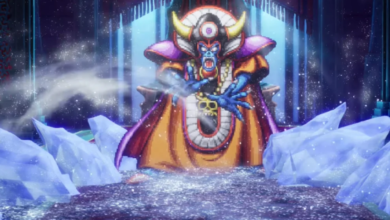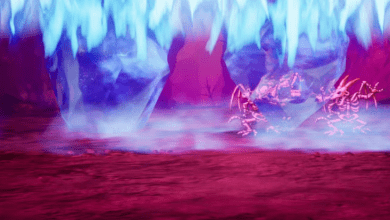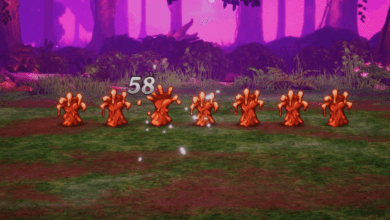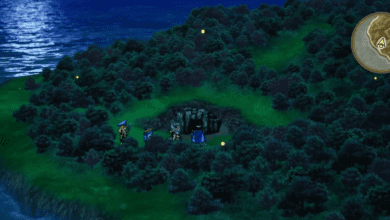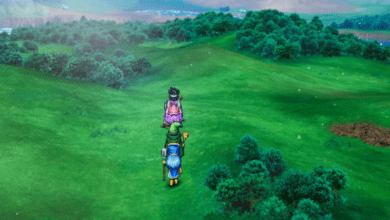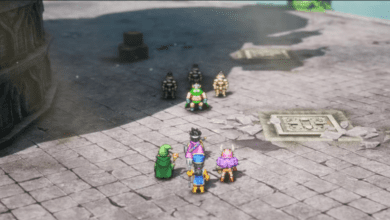Dragon Quest 3 Remake: A Journey Through the Evolution of an RPG Classic
Key Takeaways:
- Dragon Quest 3 has evolved through various platforms and remakes over the decades, each version enhancing graphics, gameplay mechanics, and player experience.
- The upcoming HD-2D remake introduces numerous quality-of-life features, additional storylines, and revamped graphics, sound, and performance options.
- The remake integrates modern conveniences like quest markers, multiple save slots, new character abilities, and diverse difficulty levels, enhancing accessibility for both new and seasoned players.
Dragon Quest 3 stands as a cherished chapter in RPG history, captivating fans across generations. With Square Enix announcing an HD-2D remake, fans are set to experience a fresh take on this classic, complete with modern graphics, updated features, and even new story elements. In this article, we’ll dive into Dragon Quest 3’s evolution over the years, exploring the differences between each version, from the original NES release to the upcoming HD-2D remake. This will give both new players and veteran fans a clear understanding of what each version has offered and what they can expect in the latest incarnation.

The Original NES/Famicom Version: Where It All Began
When Dragon Quest 3 first launched on the NES in North America (known then as Dragon Warrior 3), it introduced gamers to an early fantasy world that brought a unique class system, linear storytelling, and basic 8-bit graphics and sound. The game’s Japanese release for the Famicom differed from the North American version in a few significant ways: the Japanese release used a password save system, while the North American version had a battery-based save feature. This version also lacked a day-night cycle, which would become a gameplay staple in later releases.

Despite its limitations, the NES version established Dragon Quest 3 as a beloved classic, introducing key RPG elements like job classes and party customization that were groundbreaking for its time.
Super Famicom Remake: A 16-Bit Upgrade
In 1996, Japan received the first remake of Dragon Quest 3 on the Super Famicom, marking a major graphical leap from 8-bit to 16-bit. This upgrade brought more detailed character sprites, refined environments, and improved sound, introducing players to a richer version of the Dragon Quest world. This version also introduced a day-night cycle that affected NPC interactions, quest availability, and monster encounters, adding a layer of immersion and strategy.
Other enhancements included smoother gameplay, a more intuitive user interface, and a battery save feature with multiple save slots, offering Japanese players a far more convenient experience than the password-based system used in the original Famicom version.
Game Boy Colour Version: The “Definitive” Edition?
The Game Boy Color version of Dragon Quest 3, released in 2001, is often hailed as the definitive version by fans. This version retained the 8-bit style of the original but offered a vibrant color palette, detailed sprites, and gameplay additions such as mini-games, monster medals, and new dungeons. Despite limitations in sound quality due to the Game Boy Color’s hardware, the soundtrack maintained its charm, echoing the essence of the Super Famicom version.

The Game Boy Colour version also introduced post-game content like additional dungeons and boss fights, expanding the gameplay experience. It featured multiple save slots and a refined user interface, making it one of the most complete and portable versions of the game.
Mobile Port: A Simplified Experience
Dragon Quest 3 was eventually ported to mobile devices, retaining most of the Super Famicom version’s features. While the gameplay and graphics were largely unchanged, the mobile version included touch-based controls and auto-save functionality, offering more convenience for on-the-go gaming. Though it lacks the extras that fans appreciated in the Game Boy Colour version, the mobile version remains an accessible way to experience Dragon Quest 3 for modern players.
Wii Version: A Collector’s Treasure
In Japan, the Wii saw a special collector’s edition that bundled Dragon Quest 1, 2, and 3, providing fans with a nostalgic throwback to the original trilogy. This release bridged the classic gameplay with modern consoles, making it an appealing choice for collectors and dedicated fans of the series.
Upcoming HD-2D Remake: The Modern Era of Dragon Quest 3
With the HD-2D remake, Square Enix aims to bring Dragon Quest 3 to a new generation while paying homage to its classic roots. The remake features the distinctive HD-2D style popularized by Octopath Traveler, merging pixel art with modern lighting and textures to create a vivid world that feels both retro and fresh. Here’s a closer look at the anticipated changes and features in this upcoming release:
Enhanced Graphics and Performance Options
The remake will be available on current-gen consoles, including the PlayStation 5, allowing for enhanced graphics modes and performance modes. The graphics mode emphasizes visual quality, with detailed textures and lighting effects, while the performance mode provides a smooth 60fps gameplay experience for seamless exploration and combat.
New Difficulty Modes
Players will have access to three difficulty levels in the remake:
- Easy Mode – Allows players to deal more damage with bosses unable to recover HP.
- Normal Mode – Reflects the traditional Dragon Quest experience.
- Draconian Mode – A hard mode where bosses have higher HP, deal increased damage, and yield less experience and gold upon defeat, designed for veteran players seeking a challenge.
Gameplay Enhancements and Quality of Life Improvements
The remake introduces a range of quality of life features that cater to modern players, including quest markers, fast travel with Chimera Wings, a mini-map, and up to nine save slots. A recall log has been added, enabling players to revisit past dialogue a feature that’s particularly helpful for keeping track of story progress and quest details.
Expanded Combat Mechanics and Character Abilities
In previous versions, characters like the Warrior and Fighter were limited to basic attacks. In the remake, these characters will have non-magical abilities, adding depth to combat. Players will also see new animations and status indicators for enemies, including health cues, which can help with strategizing during battles.
Additionally, players can now equip two accessories per character (a main and a secondary), which adds flexibility and customization to character builds. New spells, items, and abilities also add variety to the gameplay, with multi-hit weapons now capable of dealing critical damage.
New Content and Story Expansions
The HD-2D remake will include new episodes featuring additional storylines, voice acting, and character lore to deepen the narrative of the Erdrick Trilogy. In the initial trailer, a new monster called the “Dancing Flame” was showcased, hinting at additional foes and challenges unique to the remake.
Players can also explore new areas labeled as “secret places” which may tie into side quests or post-game content, offering further rewards and challenges for those who wish to explore every corner of the game world.
Immersive Soundtrack and Audio Enhancements
The remake boasts an orchestral soundtrack that reimagines the original score with richer and more immersive soundscapes. Sound effects are similarly enhanced, providing a fully modernized audio experience that complements the HD-2D visuals.
Conclusion: A Legendary RPG Reinvented
The upcoming remake of Dragon Quest 3 is shaping up to be the ultimate version of this beloved classic. With its stunning HD-2D visuals, expanded content, modern quality-of-life features, and immersive soundtrack, the remake promises to offer a nostalgic yet fresh experience for both newcomers and longtime fans. From its early days on the NES to its anticipated HD-2D release, Dragon Quest 3’s journey reflects the evolution of RPGs and the enduring appeal of its timeless adventure.
FAQ Section
1. What is the difference between Dragon Quest 3’s original NES version and the HD-2D remake? The original NES version featured 8-bit graphics, limited audio, and a password save system (in Japan). In contrast, the HD-2D remake brings enhanced HD-2D graphics, quality-of-life improvements, new difficulty modes, expanded content, and an orchestral soundtrack.
2. Why is the Game Boy Colour version considered the “definitive” edition by many fans? The Game Boy Color version is often praised as the definitive edition because it includes additional content such as post-game dungeons, monster medals, and mini-games, along with multiple save slots and a refined user interface.
3. What are the new features in the HD-2D remake of Dragon Quest 3? New features in the remake include updated graphics, performance modes, additional difficulty levels, new character abilities, quest markers, enhanced audio, and new storylines. Players can also expect modern conveniences like fast travel, nine save slots, and a recall log for tracking dialogue.
4. Will the HD-2D remake of Dragon Quest 3 be available on all consoles? Square Enix has announced that the HD-2D remake will be released for current-gen consoles, including the PlayStation 5. Availability on other platforms is expected but has not been fully confirmed.
5. How does the HD-2D remake handle combat differently? The remake introduces new enemy animations, a wider range of character abilities, additional accessories, and revamped spells and items. Players will also encounter new enemy types and a more interactive battle interface, enhancing both strategy and visual engagement.
